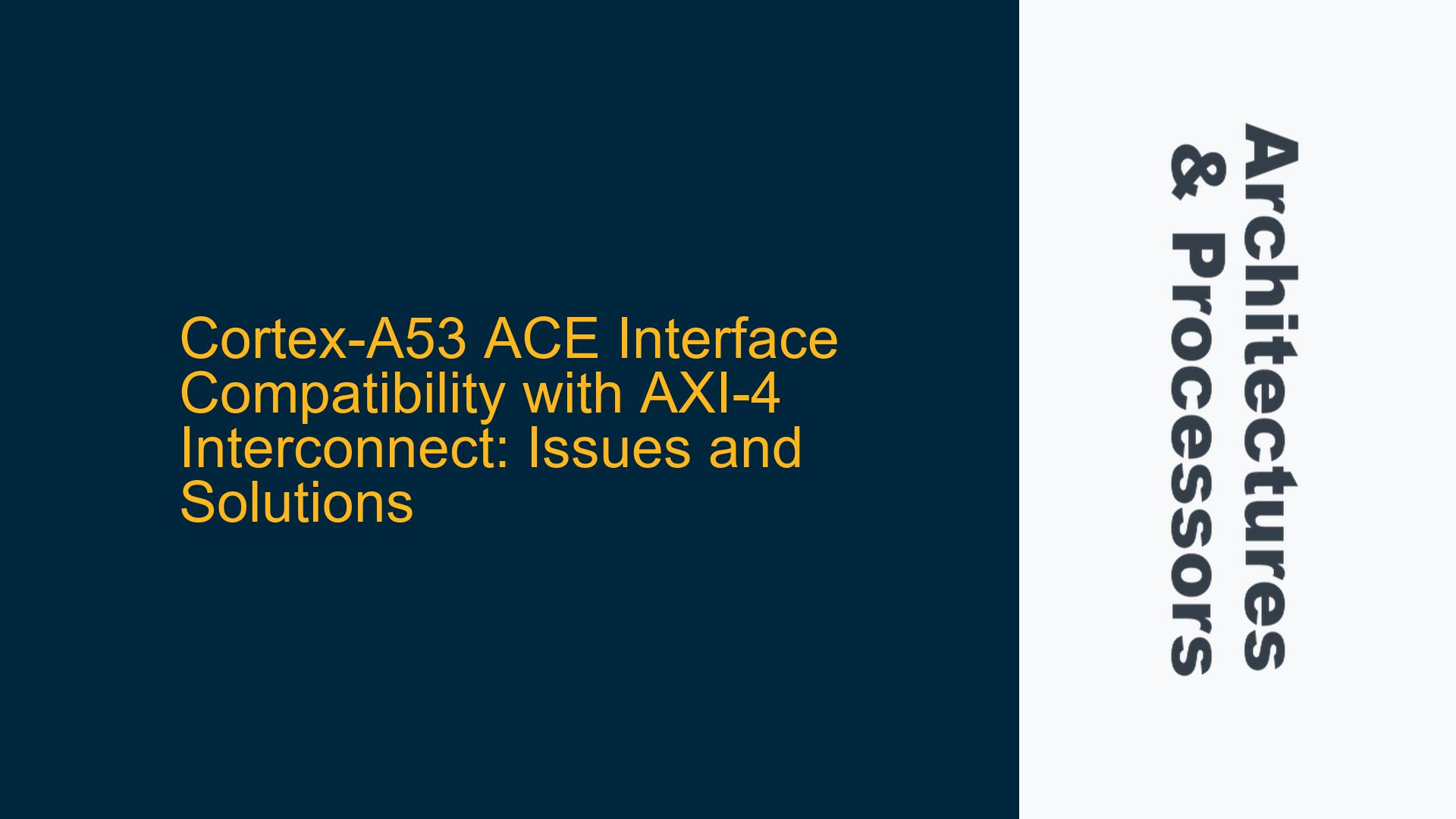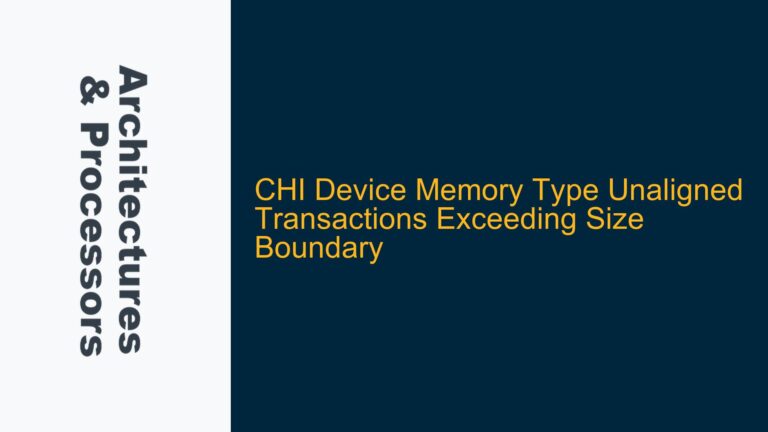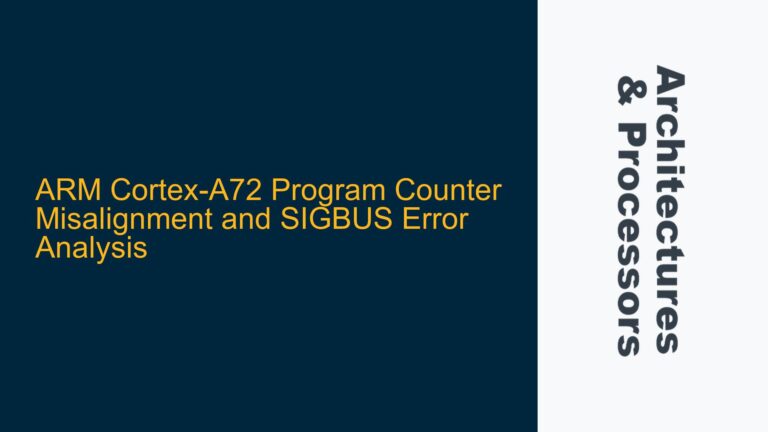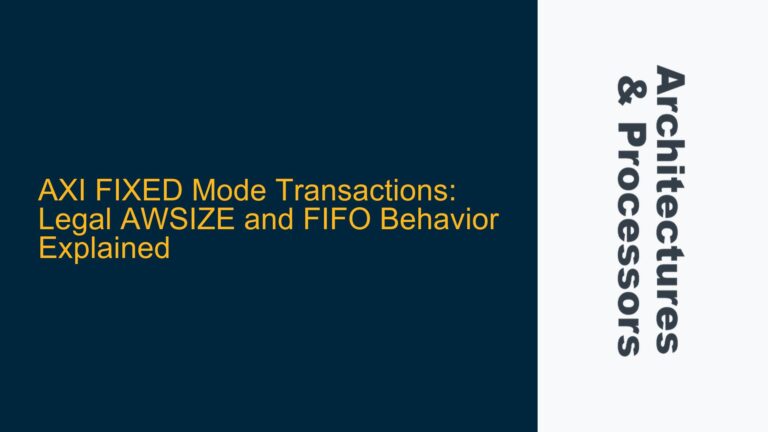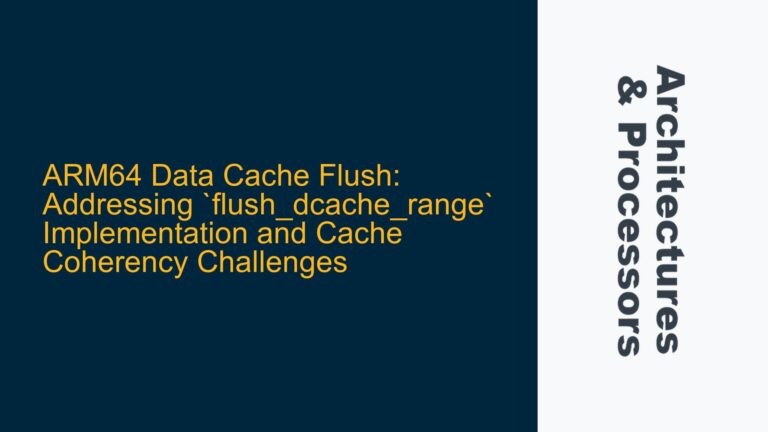Cortex-A53 ACE Interface and AXI-4 Interconnect Compatibility Challenges
The Cortex-A53 processor, a widely used ARM core in embedded systems, supports two primary master interfaces: ACE (AXI Coherency Extensions) and CHI (Coherent Hub Interface). These interfaces are designed to facilitate coherent data sharing in multi-core systems. However, when integrating the Cortex-A53 with an AXI-4 interconnect, compatibility issues can arise, particularly when the ACE interface is involved. The ACE interface introduces additional signals and features for cache coherency, which are not present in the AXI-4 specification. This discrepancy can lead to functional problems if not properly addressed.
The core issue revolves around the Cortex-A53’s ACE interface being connected to an AXI-4 interconnect without leveraging the coherency features of ACE. The original question posits whether tying off the ACE-specific ready signals to a logical high state would suffice for compatibility. However, this approach is not optimal and can lead to undefined behavior or system instability. The Cortex-A53 Technical Reference Manual (TRM) provides guidance on using an AXI3 compatibility mode, which is more suitable for interfacing with AXI-4 interconnects. This mode simplifies the interface by disabling ACE-specific features, ensuring smoother integration with AXI-4.
Understanding the nuances of the ACE and AXI-4 interfaces is critical for ensuring system stability and performance. The ACE interface includes signals such as ACVALID, ACREADY, CRVALID, and CRREADY, which are used for cache maintenance and coherency operations. These signals are not part of the AXI-4 specification, and their improper handling can lead to protocol violations. Additionally, the AXI-4 interconnect expects a subset of the signals defined in the ACE specification, making it essential to carefully manage the interface configuration.
Misconfiguration of ACE Signals and AXI3 Compatibility Mode
One of the primary causes of compatibility issues between the Cortex-A53 ACE interface and the AXI-4 interconnect is the misconfiguration of ACE-specific signals. When the ACE interface is connected to an AXI-4 interconnect, the ACE signals must be either tied off or managed in a way that does not violate the AXI-4 protocol. Tying these signals to a logical high state, as suggested in the original question, is not recommended because it can lead to incorrect behavior. For example, the ACREADY signal, when tied high, may cause the Cortex-A53 to assume that the interconnect is always ready to accept cache maintenance operations, which is not necessarily true for an AXI-4 interconnect.
The Cortex-A53 TRM specifies an AXI3 compatibility mode, which is designed to address this issue. In this mode, the ACE interface is effectively downgraded to an AXI3 interface, which is compatible with AXI-4. The AXI3 compatibility mode disables the ACE-specific signals and simplifies the interface to match the AXI-4 protocol. This mode is enabled by setting specific configuration bits in the Cortex-A53’s control registers. When properly configured, the Cortex-A53 can seamlessly interface with an AXI-4 interconnect without requiring additional signal management.
Another potential cause of compatibility issues is the timing of cache maintenance operations. The ACE interface includes mechanisms for cache invalidation, cleaning, and flushing, which are not directly supported by the AXI-4 interconnect. If these operations are not properly synchronized, they can lead to data corruption or system crashes. The Cortex-A53 TRM provides guidelines for managing cache maintenance operations in AXI3 compatibility mode, ensuring that they are handled correctly when interfacing with an AXI-4 interconnect.
Implementing AXI3 Compatibility Mode and Signal Management
To resolve the compatibility issues between the Cortex-A53 ACE interface and the AXI-4 interconnect, the first step is to enable the AXI3 compatibility mode. This mode is configured through the Cortex-A53’s control registers, specifically the Snoop Control Unit (SCU) and the L2 cache controller. The exact configuration steps are detailed in the Cortex-A53 TRM, but the general process involves setting the appropriate bits to disable ACE-specific features and enable AXI3 compatibility.
Once the AXI3 compatibility mode is enabled, the next step is to properly manage the ACE-specific signals. Instead of tying these signals to a logical high state, they should be tied to a logical low state. This ensures that the Cortex-A53 does not attempt to use ACE-specific features that are not supported by the AXI-4 interconnect. For example, the ACVALID and CRVALID signals should be tied low to indicate that no cache maintenance operations are in progress. Similarly, the ACREADY and CRREADY signals should be tied low to indicate that the interconnect is not ready to accept such operations.
In addition to signal management, it is important to ensure that cache maintenance operations are properly synchronized. The Cortex-A53 TRM provides guidelines for using memory barriers and data synchronization barriers to ensure that cache operations are completed before proceeding with subsequent instructions. These barriers are particularly important when interfacing with an AXI-4 interconnect, as they prevent data corruption and ensure system stability.
Finally, it is recommended to thoroughly test the system after implementing these changes. This includes verifying that the Cortex-A53 can correctly perform memory accesses and cache maintenance operations through the AXI-4 interconnect. Testing should also include stress testing to ensure that the system remains stable under heavy load. If any issues are identified during testing, they should be addressed by revisiting the configuration and signal management steps.
By following these troubleshooting steps, the Cortex-A53 ACE interface can be successfully integrated with an AXI-4 interconnect, ensuring system stability and performance. The key is to leverage the AXI3 compatibility mode and properly manage the ACE-specific signals, while also ensuring that cache maintenance operations are correctly synchronized. With careful implementation and thorough testing, the Cortex-A53 can be used effectively in systems with AXI-4 interconnects, even when the ACE interface is involved.
